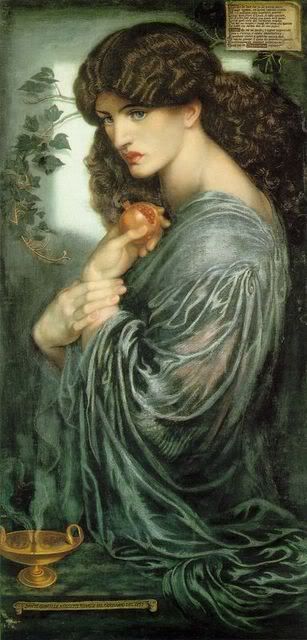Ernst Bloch, The Principle of Hope I (1959)

Dante Gabriel Rossetti, "The Day Dream" (1880)
there has always been an element of contradiction to the work of dante rossetti. one of the founding members of the pre-raphaelites, he had enthusiastically embraced the romantic ideals that the group called a return to nature. they wished to portray events as they might happen, in their natural light and setting and in more natural poses. what this involved for a great many of the pre-raphaelites, and what they became very well noted for, was the extreme detail that appeared in their works, their determination to work from nature and the narrative content of their work. but rossetti was never as technically proficient as a millais or hunt and after one early failure, never showed his paintings in the official settings provided by victorian society. instead, for rossetti painting was a way of reimbuing the world with mystery. he painted medieval tales or highly catholicized religious images, allowing him to depict a world which married nature and grace.
in general, like most of the other pre-raphaelites and those who were influenced by them, rossetti searched for a way to resist the increasingly industrialized world, its coldness and mechanization....and along with it the modes of production that determined art and artistic production, with a consequent loss of quality and increasingly alienation from 'nature'. yet as he gained in popularity and success, rossetti's lack of any real committment to truth (which was assumed in the other pre-raphaelite's turn to nature) began to tell upon his work. his path of resistance became one of autonomous beauty: paintings of isolated women, with no narrative context, idealized and divinized (in some cases literally: astarte syriaca, proserpine). the romantic ideal of beauty becomes rossetti's only goal. but as a result, his works begin to take on a mass-production quality that mirrors the industrialized world he wanted so badly to escape. figure after nearly identical figure comes out of the rossetti studio (again just compare this painting with his famous image of proserpine or astarte syrica or almost any of the others for which jane morris was his model). rossetti became a brand; an easily recognizeable something to own, and the rossetti-brand catered to the need of the newly wealthy industrialists to advance their way up the status ladder. rossetti's beauty-without-truth-content proved easily assimilable to that which it once rejected. and what was once the day-dream of hope, resistance to capitalist industrialization, became escapist fantasy living off of and supporting that same industrialization.

Dante Gabriel Rossetti, "Proserpine" (1877)
-LoA
2 comments:
LoA,
I appreciate the art lesson. It is a bit of an intellectual break from the 1000 pages I photocopied this week.
Russ:)
always happy to do my part in distracting people from doing their real work.
on the brightside, you are almost there!
best wishes,
LoA.
Post a Comment